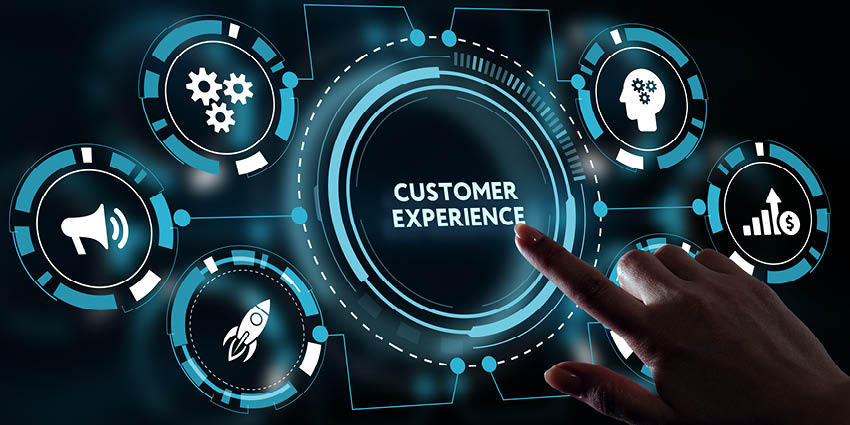About a decade ago, customers had limited to no interaction at all with customer care representatives. Customers would hear about a particular product from their friends and families, simply go to the mentioned shop, and without any hassle make a purchase. make a purchase without any hassle.
Life was less complicated and things were simpler. However, in today’s world, things have taken a 360 turn. Processes have become more complex and the involvement of both customer service representatives and computers has become compulsory for a business to prosper.
We are saying this because this is the digital age. Almost everything is computerized. Moreover, customers are bombarded with information as well as data on a regular basis and are expected to make choices diligently and swiftly. Not only this but they are also required to analyze the models of different businesses, inspect their processes and then reach a decision based on their assumptions and analysis.
This can be a very hectic process for customers who are judging from far away. To gain complete insight into the process and functions of a business, customers now require the assistance of a representative who can guide them about all the details. The customer support team is trained to listen to the problems of the customers and assist them without delay.
Telecom companies, in particular, have started placing great emphasis on these pieces of training. They ask their employees to practice acts of empathy and kindness. They also give them lessons on attention to detail and other major aspects of good customer service. Companies like Optimum also train their employees to learn Spanish to entertain their Spanish customers. By subscribing to Servicio al Cliente Optimum en español, customers can gain access to customer service in Spanish 24 hours a day.
Thus, this goes on to show that companies are striving hard to win the hearts of their customers by making processes easy for them. The customer service department is nownow is considered the most significant department in a company. We are saying this because customers are the face of any organization. One unpleasant encounter and customers won’t contact your company ever again.
In the past 10 years, the customer service department has progressed in many ways. This article will discuss a few of the major changes and what to keep in mind for the years to come.
- The move towards personalization
How would you feel if you received an email from your favorite brand, greeting you on your birthday? You would be elated of course. You would also get a feeling that you are important and that you matter. Keeping this in mind, several businesses have adopted the practice of befriending customers, greeting them by their names, and conversing with them politely. This approach definitely has a very optimistic impact on customer experience.
Nevertheless, customers nowadays have set higher expectations. They aren’t very easily impressed by these small acts of personalization. They in fact expect distinctly personalized encounters every single time they interact with a business. Customers are also aware that businesses are already working on techniques to achieve this level of efficiency.
These techniques include analyzing consumer website behavior, their Google search results, purchase history as well as previous encounters with the business or company. This in turn helps a business in gaining a deeper insight into the desires and wants of the customers and this helps them in personalizing the customers’ experience.
This can include adjusting your website based on user activity, making informed product recommendations, or reaching out to clients with tailored offers and rewards at the appropriate time.
- The introduction of different modes of communication
In the olden days, businesses would simply converse with their customers in person during normal business hours. However, with the advent of websites, email, and social media platforms, modes of communication greatly changed and became more diverse. This was a plus point for businesses that could now communicate with their customers at any time of the day.
Gradually new advancements came into being making the customer care departments even more efficient. Chatbots as well as website forms took over and started offering automated assistance without any delay. Today customers completely rely on chatbots that assist them in the most effective manner. They readily provide solutions to the customers’ issues thus ensuring the competence of the entire process.
Customer service is a very significant part of the customer experience. Customers demand smooth processes with a high level of assistance. Keeping this in mind, businesses must further automate their processes and offer more forms of communication in order to meet the needs and demands of the customers.
- The role of the entire company in CX
In the past few years, businesses have learned that interacting with customers and making their experience worthwhile isn’t just the job of a customer care department. Customer care representatives as well as associates aren’t the only people who are responsible for ensuring the satisfaction of the customers.
According to research, the majority of buyers give prior favorable brand experiences a lot of weight when evaluating a new purchase. Therefore, every level of an organization should consider how to maintain and improve good CX.
Executives should, for instance, think about how innovations and improvements will affect the customer experience. Additionally, when making updates to customer-facing apps or websites, technicians should consider the end-user experience.
Final words
Customer experience has greatly advanced in the last ten years and it will continue to evolve in the coming years. Hence, if brands want to draw in and keep customers, they must develop and adapt through time.
The pandemic has also demonstrated that companies that can quickly adjust to changes both major and minor are stronger. You’re setting yourself up for future success as long as you remain aware of what your clients want (and need).

